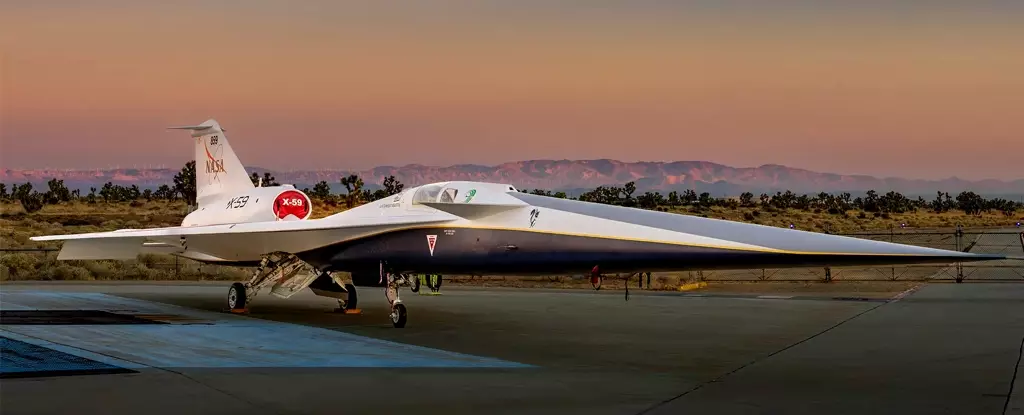When we hear the term “space plane,” our imagination runs wild with thoughts of futuristic aircraft and revolutionary air travel. NASA has recently unveiled their latest creation, the X-59, which promises to live up to these expectations. This quiet supersonic aircraft aims to minimize the sonic boom it produces when traveling faster than the speed of sound. Developed in collaboration with Lockheed Martin, the X-59 is set to take its maiden flight later this year. With ambitions to revolutionize commercial air travel, NASA hopes to pave the way for a new generation of supersonic jets that can surpass the speed of sound.
Supersonic flight refers to the ability of an aircraft to travel at speeds exceeding the speed of sound. For reference, the speed of sound varies depending on air density, but at sea level, it is approximately 1,224 km/hour. Flying slower than this threshold is considered subsonic, while breaking the sound barrier results in a supersonic flight. However, when an aircraft transitions into supersonic speeds, it creates a sonic boom caused by compressed shock waves. Contrary to popular belief, the boom does not occur the moment an object crosses the sound barrier, but rather as a continuous sound while traveling faster than sound.
One of the primary objectives of the X-59 is to address the disturbance caused by the sonic boom. This revolutionary aircraft features a design reminiscent of a science fiction movie, measuring 30 meters in length and 9 meters in width. Its most striking feature is the thin, tapered nose, which accounts for approximately one-third of its total length. This unique design aims to significantly reduce the shockwaves responsible for the sonic boom. However, due to this design feature, the pilot’s visibility is compromised, as they are situated halfway along the aircraft. To overcome this challenge, the X-59 incorporates high-resolution cameras that transmit real-time footage to 4K monitors in the cockpit through the eXternal Vision System.
Before the conception of the X-59, supersonic flight was achieved by aircraft such as the Tupolev TU-144, which took its maiden flight on December 31, 1968, and the renowned Concorde, which first flew on March 2, 1969. These iconic planes forever etched their names in aviation history as the pioneers of supersonic travel. Unfortunately, Concorde was decommissioned in 2003 after 27 years of service. Since then, we have been limited to subsonic flights, enduring lengthy ocean crossings lasting several hours. In sharp contrast, Concorde could complete a trans-Atlantic crossing from JFK to Heathrow in less than three hours, while modern jets typically take around seven hours. The X-59’s upcoming test flights hold the promise of faster travel times worldwide in the future.
The X-59 represents a significant leap in the development of supersonic aircraft and the future of air travel. If the forthcoming test flights prove successful, we may witness a new era of aviation characterized by speed and efficiency. Imagine being able to traverse vast distances in a fraction of the time it currently takes. Faster travel times could reshape the world, bringing people closer together and revolutionizing industries reliant on speedy transportation. While the X-59 is a marvel of engineering, it is merely the starting point for what lies ahead. As technology progresses, we can hope for even more advanced and efficient supersonic aircraft in the years to come.
NASA’s X-59 space plane is poised to redefine air travel by tackling the disturbance caused by the sonic boom. With its sleek design and innovative features, this supersonic aircraft offers a glimpse into the future of aviation. Building upon the legacy of aircraft such as the Concorde and TU-144, the X-59 paves the way for faster and more efficient travel worldwide. As we await its maiden flight, the world holds its breath, eager to see if this groundbreaking aircraft will indeed revolutionize air travel as we know it.


Leave a Reply